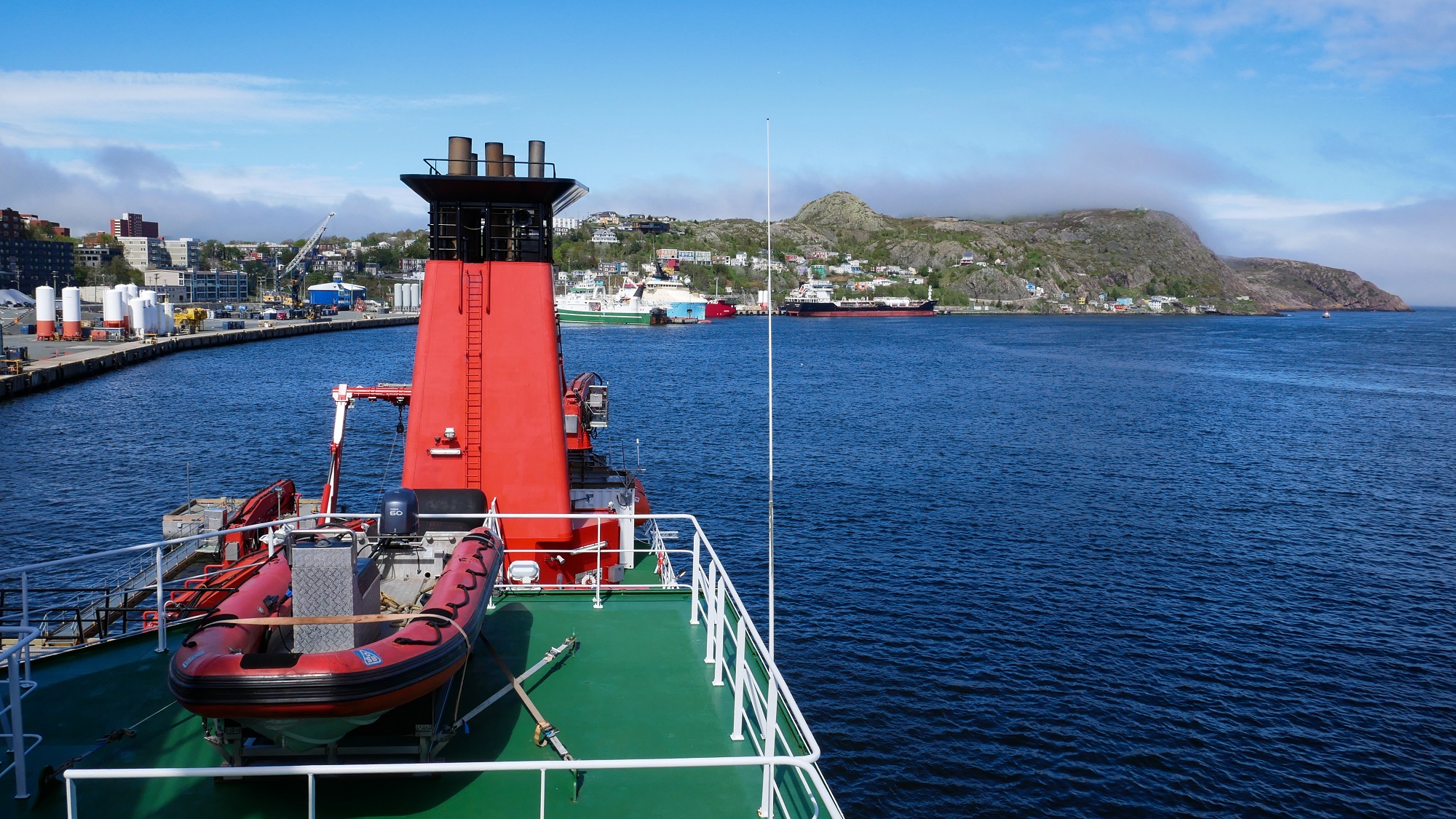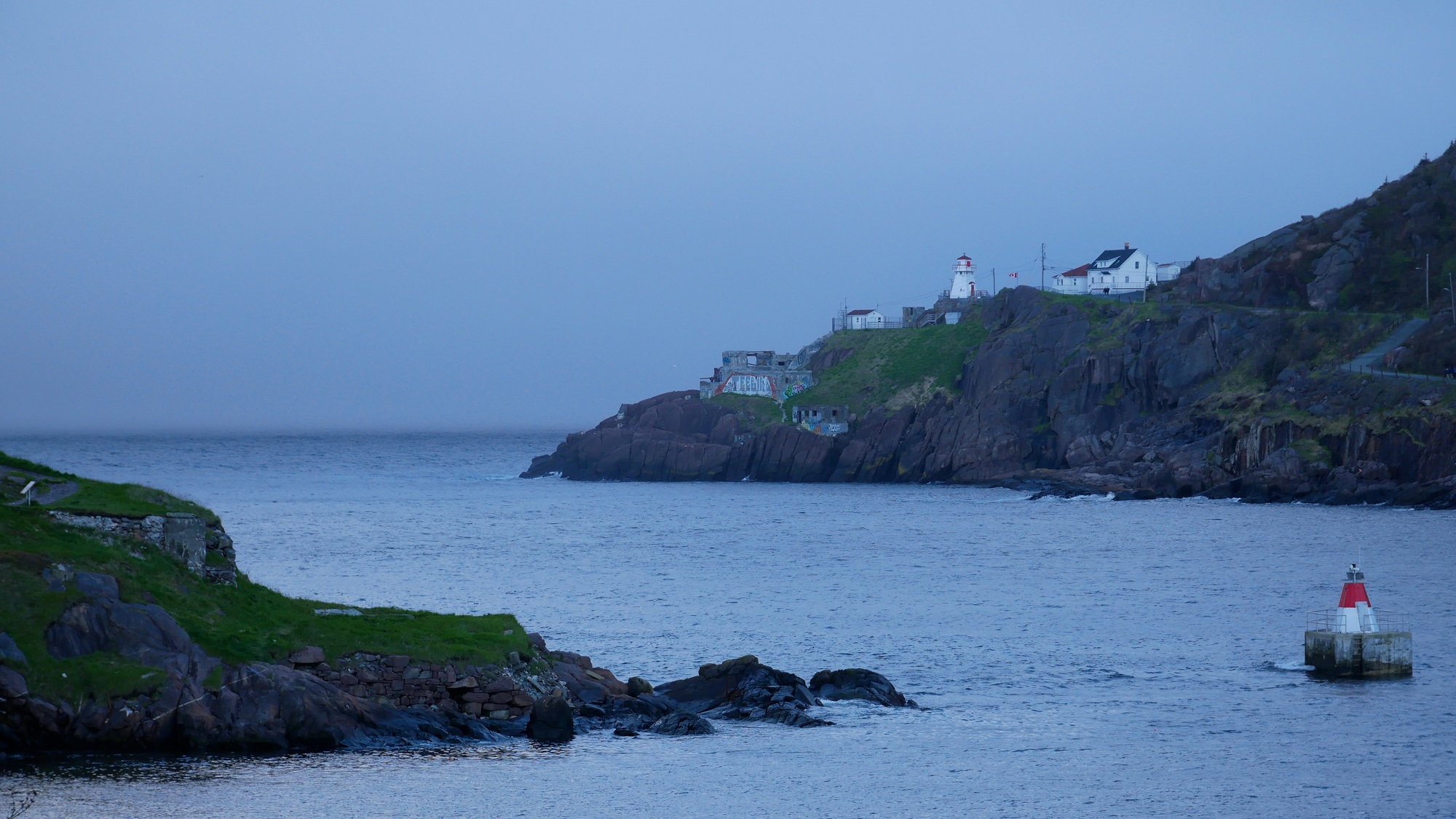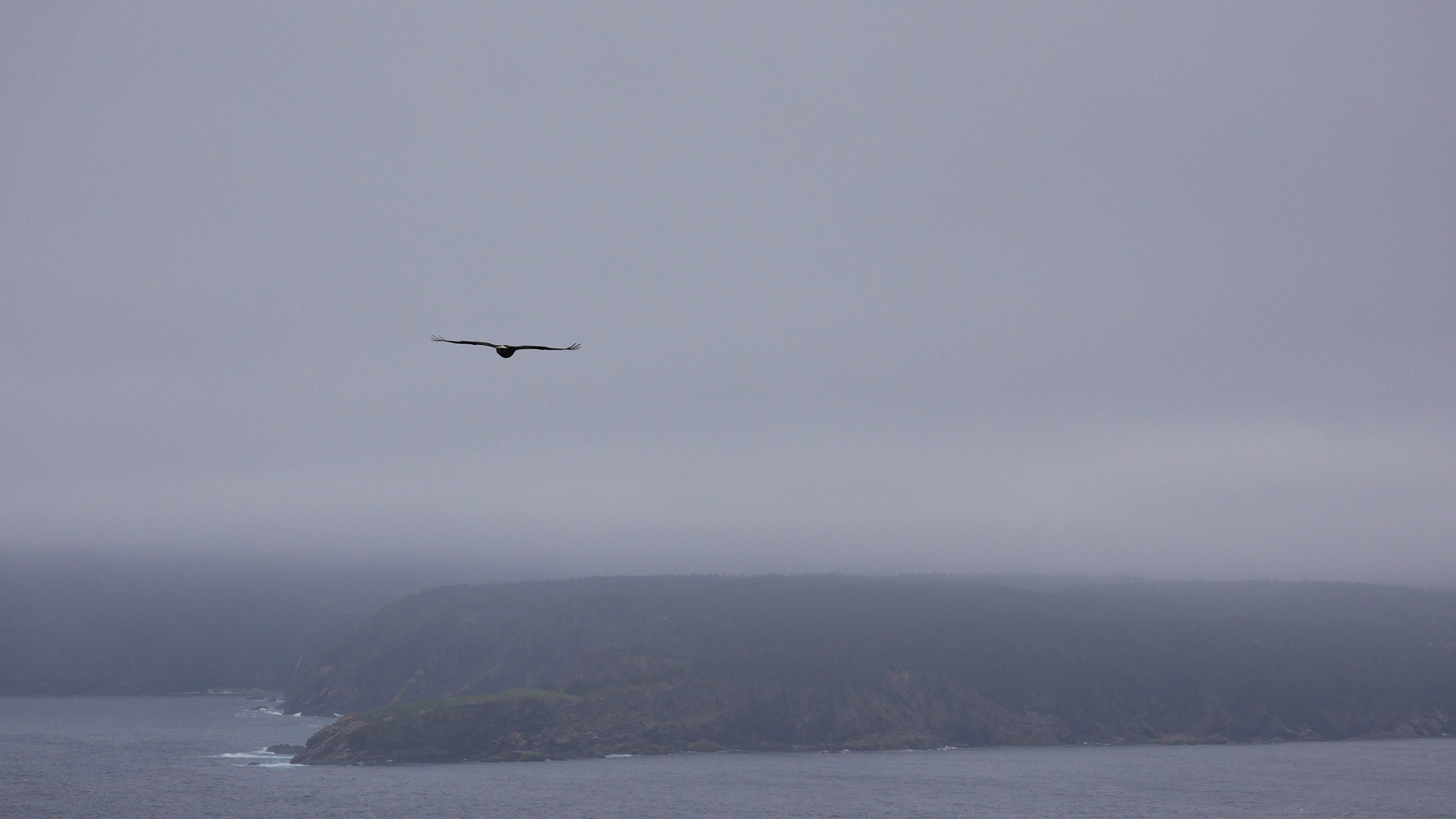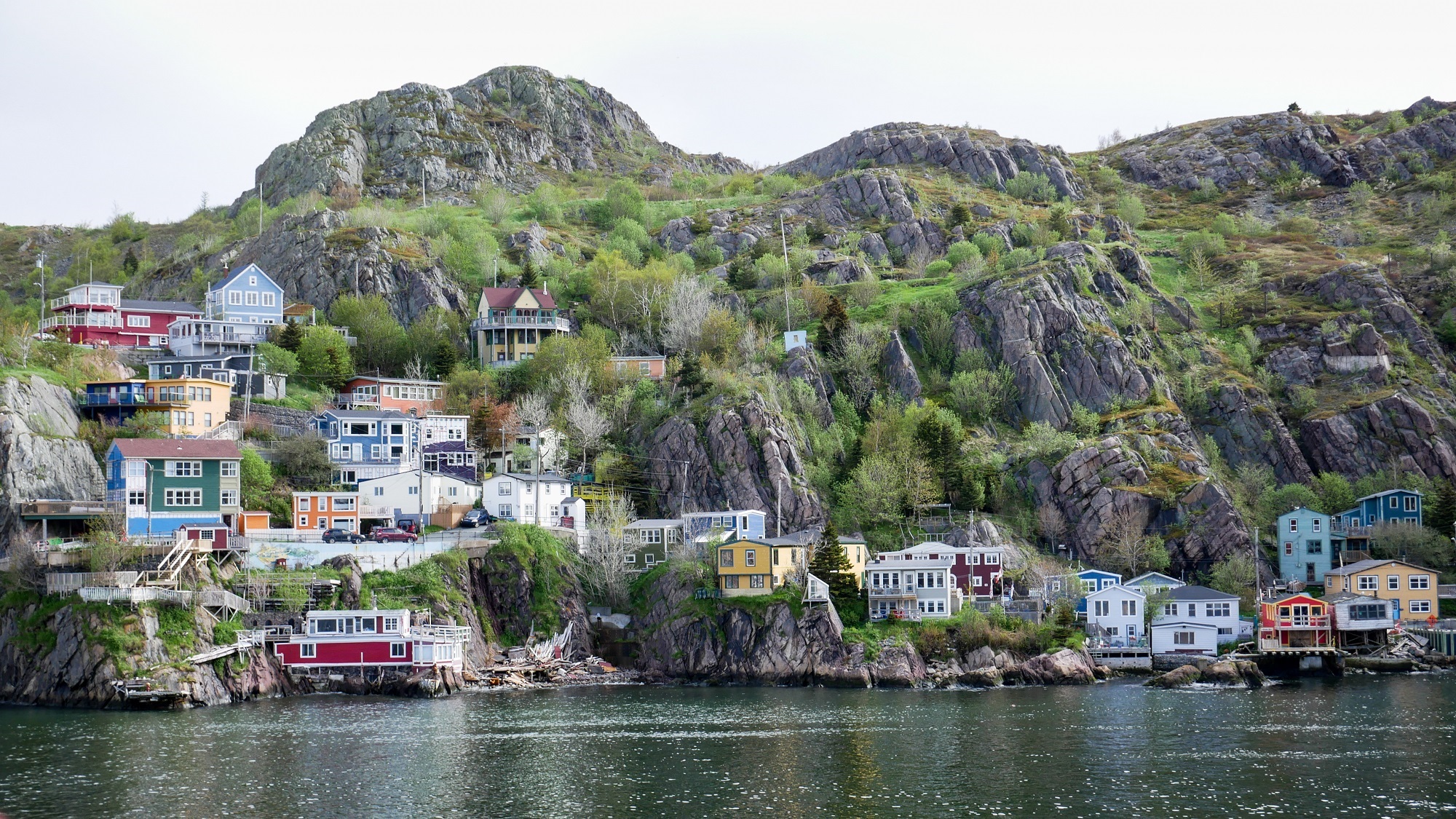English version below

Mit dem Ende des ersten Teils unserer Forschungsfahrt haben wir den Hafen von St. John’s erreicht. Nachdem die Maria S. Merian noch lange in Nebel gehüllt war, tauchte dann ganz plötzlich der Eingang der Bucht von St. John’s auf. Nach Pass- und Zollkontrolle durften wir dann zum ersten Mal seit dem Start unserer Reise 10 Tage zuvor festen Boden betreten. St. John’s ist ein kleiner Ort mit hügeligen Straßen und vielen bunten Holzhäuschen. Der Überlieferung nach soll ein unter englischer Flagge segelnder venezianischer Seefahrer 1497 den Naturhafen von St John’s entdeckt haben. Er nannte das Land „neu gefundenes Land also New-found-land. 1583 wurde St. John’s dann zur ältesten britischen Kolonie. Nachdem die Siedlung ein paar Mal zwischen England und Frankreich hin und her wechselte, blieb sie ab 1762 fest in englischer Hand. Viele der Siedler damals kamen aus Irland, was vermutlich die Ursache dafür ist, dass der Neufundländische Dialekt dem Irischen ähnelt. Vielleicht erklärt es auch die ausgeprägte Pubkultur und die keltische Livemusik, die dort gespielt wurde.

Im Vorhinein wurde uns eine Wanderung auf den Signal Hill ans Herz gelegt. Dort empfing Guglielmo Marconi am 12. Dezember 1901 die erste transatlantische Funkübertragung. Ein historischer Ort, denn hier wurde die Nachricht vom Sinken der Titanic und vom Beginn des zweiten Weltkrieges als erstes Empfangen.


Obwohl immer noch sehr viel Nebel um St. John’s und Signal Hill lag, konnten wir zwischendurch doch den ein oder anderen Blick auf die Felsen und den Atlantik werfen. Wir hatten sogar das Glück einen Buckelwal und einen Weißkopfseeadler zu sehen.
Nachdem wir Proviant und Treibstoff nachgefüllt haben und die neue Crew- und Wissenschaftsmitglieder an Bord gekommen sind, geht es jetzt weiter in die Labradorsee. Was wird dort machen, erfahrt ihr im kommenden Blogartikel. Also bleibt gespannt!
English version:

At the end of the first part of our research trip we reached the port of St. John’s. After the Maria S. Merian had been shrouded in fog for a long time, the entrance to St. John’s Bay suddenly appeared. After passport and customs control, we were then allowed to enter solid ground for the first time since the start of our journey 10 days earlier. St. John’s is a small town with hilly streets and many colorful wooden houses. According to legend, a Venetian sailor sailing under the English flag discovered the natural harbour of St John’s in 1497. He called it “new-found-land ” (Newfoundland). In 1583, St. John’s became the oldest British colony. After switching between England and France a few times, the settlement remained firmly in English hands from 1762. Many of the earlier settlers back then came from Ireland, which is probably why the Newfoundland dialect is similar to Irish. Perhaps it also explains the distinct pub culture and the Celtic live music that was played there.

Before our arrival we the beautiful trail to Signal Hill was recommended to us by several people. On December 12, 1901, Guglielmo Marconi received the first transatlantic radio transmission there. A historic place, because this is where the news of the sinking of the Titanic and the beginning of the Second World War was first received.
Although there was still a lot of fog around St. John’s and Signal Hill, in between we were able to catch a glimpse of the rocks and the Atlantic Ocean. We were even lucky enough to see a humpback whale and a bald eagle.


After refilling supplies and fuel and the new crew and science members coming on board, we are now heading to the Labrador Sea. In the next blog post, I will explain a bit about what we are doing there. So stay tuned!